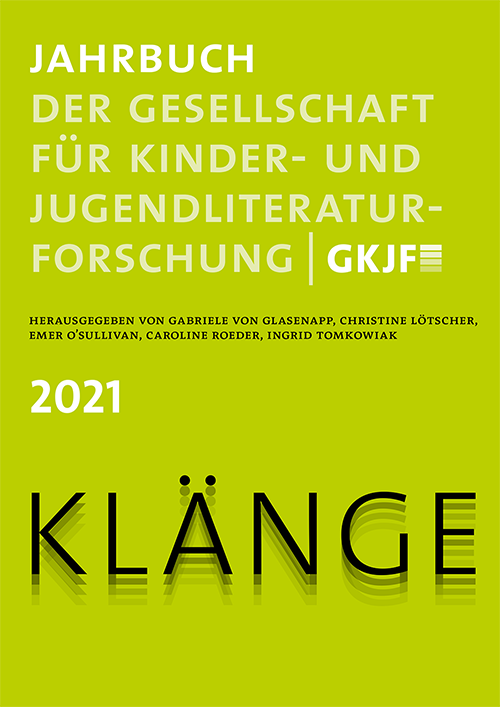Kindsein – Erinnern – Erzählen
(Selbst-)Beschreibungen von Kindheiten in ›Wendezeiten‹ in erinnerungskultureller und generationeller Perspektive
DOI:
https://doi.org/10.21248/gkjf-jb.71Abstract
Artikelbeginn:
[English title and abstract below]
»Erinnerungen aus der Kindheit kann man doch nur haben, wenn man selbst kein Kind ist« (de Velasco 2013, S. 10) – so kommentiert die 13-jährige homodiegetische Erzählerin Nini im Roman Tigermilch das Auftauchen einer ersten bewussten »richtige[n] Kindheitserinnerung« (ebd.). Angesprochen ist damit der zunächst paradox anmutende Zusammenhang von Kindsein und Erinnern. Sich selbst im umfassenderen Sinn daran zu erinnern, wie es ist, ein Kind zu sein, gehört zu den Fähigkeiten, die Kindern nicht zugesprochen werden. Die Kindheit gilt als das Lebensalter, in dem man ganz bei sich ist, in dem alles gegenwärtig und vieles möglich ist. Pläne und Perspektiven richten sich in die offene Zukunft, im Rückblick über Erinnerungen zu verfügen und sie als Teil der eigenen Biografie zu begreifen, wird selbst zum Zeichen der Differenz: ein Indiz dafür, dass die Kindheit bereits an ihr Ende gekommen ist.
Recalling and Retelling Childhood
The (Self)Depiction of Childhood during German Reunification from Memory Culture and Generational Viewpoints
Ever since the Peaceful Revolution paved the way for the reunification of Germany in 1990, texts and media for children and young adults have depicted these historical events from a range of narrative and generational viewpoints. This article addresses forms of childhood remembrance of this era of radical political and social upheaval in East Germany, focussing on autobiographical texts and media (essays and comics) as well as novels and stories. These are discussed through the lens of memory studies with respect to individual and collective identity and memory construction, and as functions of intra- and intergenerational communication. Using selected examples and with reference to the categories of the novel of remembrance and the novel of memory, the article identifies narrative strategies and image–text relationships employed to recall the events preceding and following German reunification. It shows how texts filter, interpret and condense individual memories, and link these to generational memory, and how they may ultimately be seen as contributions to communicative memory.
Downloads
Veröffentlicht
Ausgabe
Rubrik
Lizenz
Copyright (c) 2021 Jahrbuch der Gesellschaft für Kinder- und Jugendliteraturforschung

Dieses Werk steht unter der Lizenz Creative Commons Namensnennung - Nicht-kommerziell 4.0 International.





